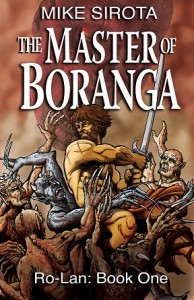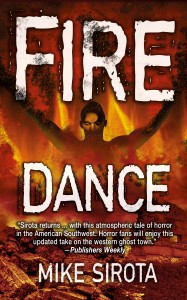Thus ends my three-part series, first presented in 2013, on how writers can engage their readers at the start of their novels.
 Okay, one more post on how writers engage their readers with a strong opening hook, and then I’ll get back to other important matters, such as bad horror movies. Actually, this is the only topic about writing to which I’ve devoted three posts, illustrating just how critical it is to grab readers by the jugular on page one and not let go. By this time the Agents’ Mantra should be indelibly stamped on your psyche:
Okay, one more post on how writers engage their readers with a strong opening hook, and then I’ll get back to other important matters, such as bad horror movies. Actually, this is the only topic about writing to which I’ve devoted three posts, illustrating just how critical it is to grab readers by the jugular on page one and not let go. By this time the Agents’ Mantra should be indelibly stamped on your psyche:
“I read the first sentence. If I like it, I read the first paragraph. If I like that, I read the first page. If that works for me, I turn the page.”
In my decades as a writing coach and editor I’ve heard variations of the following statement from many writers whose manuscripts I’m about to evaluate: “The first five pages of my story are kind of slow, but from page six on, it rocks!”
My reply, without even reading a word: “If that’s true, then page six should be the new page one.” If the Agents’ Mantra is true, then opening up with an expository information dump, or distant narration, or a weather report (I’ve seen this all), or whatever is a recipe for rejection. To use a cliché, put your best foot forward.
We found this rhetorical writer’s hook on page six, but I’ve discovered hooks on page twelve, page thirty-eight, and so on among the gazillion evaluations that I’ve done. For many years the record for finding a hook was on page 127. Then, some years ago, I read a nicely conceived 346-page manuscript—and found the opening hook on page 345. I kid you not! The writer ended with a flashback that would have—and ultimately did—made for a powerful prologue when moved to the beginning.
FINDING YOUR HOOK
Here are two examples of how I put my writers into the mindset of discovering their own unique hooks. Example one: my writer has a thriller where experiments in finding a cure for deafness go horribly wrong. The researcher, Dr. Elliot Fisher, will take unapproved shortcuts and so on. Good storyline—but the manuscript opened with a description of the building that houses the research center, first the outside, then the inside, then the basement with all of its technology, etc. In other words, pure exposition.
 Around page five we finally have some dialogue—we meet Fisher, learn what he’s doing, see him working on lab animals, etc. But would we still be reading at that point? More than likely not. So this is what the opening line became: Jesus had made blind men see, and now Elliot Fisher would make a deaf mouse hear.
Around page five we finally have some dialogue—we meet Fisher, learn what he’s doing, see him working on lab animals, etc. But would we still be reading at that point? More than likely not. So this is what the opening line became: Jesus had made blind men see, and now Elliot Fisher would make a deaf mouse hear.
Does that get your attention…make you want to read more? Hopefully, yes. In addition to engaging readers, this line also gives us immediate insight into Fisher, the fact that he’s full of himself, a key plot point.
Example two: the genre is comedy/thriller, the main character a repo man named Craig Sabian. But we don’t meet Craig until a couple of chapters in, when he tries to tempt a pit bull guarding a vehicle that he’s come to repossess with some food, to divert it. Instead, the writer opens with a minor character—a burglar—cruising a neighborhood and looking for a mark. It wasn’t a bad hook, but what I ultimately suggested 1) showed readers that this was supposed to be a humorous story, and 2) immediately introduced the main protagonist: The pit bull’s dinner options consisted of a cheeseburger or Craig Sabian’s ass.
“I AM INSANE”
 Indeed, this might be a personal statement, but these are also the first three words that I ever penned in a novel, many decades past. They open up my fantasy-adventure novel, The Master of Boranga, published by Zebra Books back in the ’80s and reissued by Atoris Press in 2012. The book underwent many revisions through the years, but that opening never changed. Without realizing it I had launched my writing career with a hook, one of those “zingers” that I wrote about last time.
Indeed, this might be a personal statement, but these are also the first three words that I ever penned in a novel, many decades past. They open up my fantasy-adventure novel, The Master of Boranga, published by Zebra Books back in the ’80s and reissued by Atoris Press in 2012. The book underwent many revisions through the years, but that opening never changed. Without realizing it I had launched my writing career with a hook, one of those “zingers” that I wrote about last time.
A SUBTLE HOOK
But you don’t need that “perfect” one-liner to make a reader want to finish the paragraph, turn the page, or whatever. Let me share the first page or so of my 2011 ghost story, Fire Dance, and illustrate how a more subtle hook can build interest. Afterward, I’ll apply some of the elements that I addressed in a previous post.
Outside the adobe walls of the sanitarium the eerie, primordial beauty of the southern California desert went ignored by the wandering inmates.
No matter that it was April, the time when desert wildflowers blossomed, painting a landscape that contradicted the majority of opinions regarding the bleak, arid world of sand and scrub. The inmates of Concordia Sanitarium, in their white, shroudlike gowns, did not see the patches of magenta monkey flowers, the yellow blooms of the creosote bush or the burroweed. The fiery red tips of the ocotillo cactus were invisible to them, and so too the purple-blue buds of the indigo bush.
 Jacob Owen liked this time of year, and he took a moment to observe its subtleties, as a connoisseur would study a fine work of art. Once, he would have felt no differently than the rest of the inmates.
Jacob Owen liked this time of year, and he took a moment to observe its subtleties, as a connoisseur would study a fine work of art. Once, he would have felt no differently than the rest of the inmates.
Once, he had been like them.
If not for Dr. Everett Cooke he might still be walking in their shrouds.
Good Dr. Cooke.
The first sentence—which is also the first paragraph—tells us WHERE (the Southern California desert) and WHO (inmates). It also offers a number of strong words (sanitarium, eerie, primordial, inmates). The second paragraph tells us WHEN (April; the year will come on the next page), and WHAT (the wandering inmates do not see the beauty of the desert landscape). It also further establishes SETTING with colorful description. We meet a CHARACTER, Jacob Owen, who had once been an inmate but was apparently saved by Dr. Cooke. Hmm, Dr. Cooke must be important. With the imagery of shrouded sanitarium inmates wandering amid a paintbrush desert setting, we are compelled to read on—hopefully, anyway.
Final thoughts on ENGAGING readers: first, consider how you open your novel, keeping in mind the Agents’ Mantra (one last time): “I read the first sentence. If I like it, I read the first paragraph. If I like that, I read the first page. If that works for me, I turn the page.” Then, consider that your first chapter is also a hook, because you want readers to eagerly turn to chapter two. If you’ve gotten them to this point, you’re off to a good start.
Hope this helps. Happy writing!
